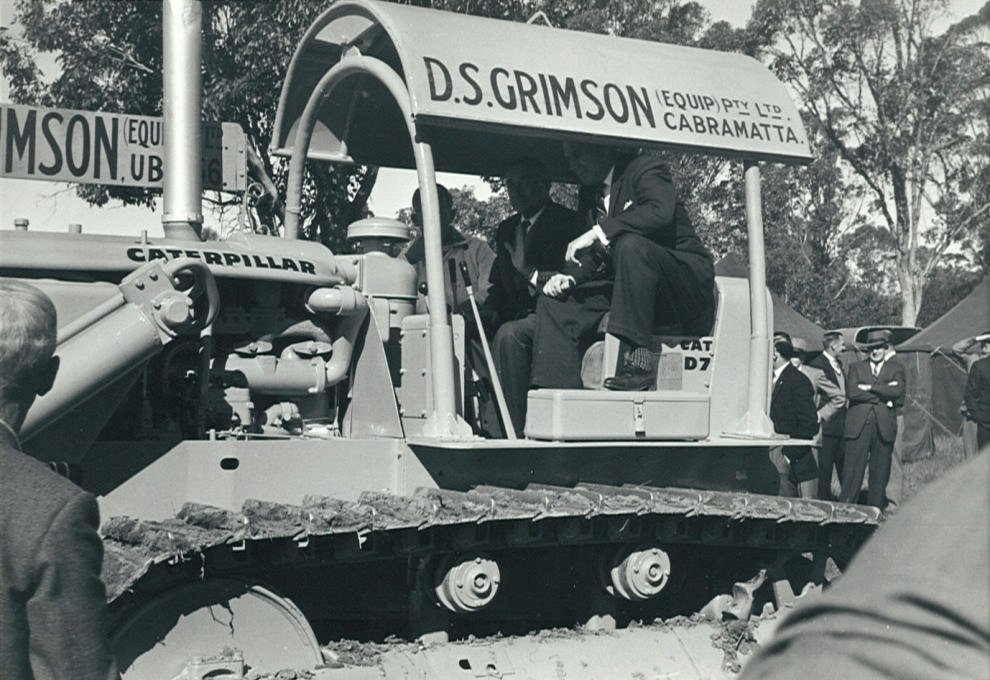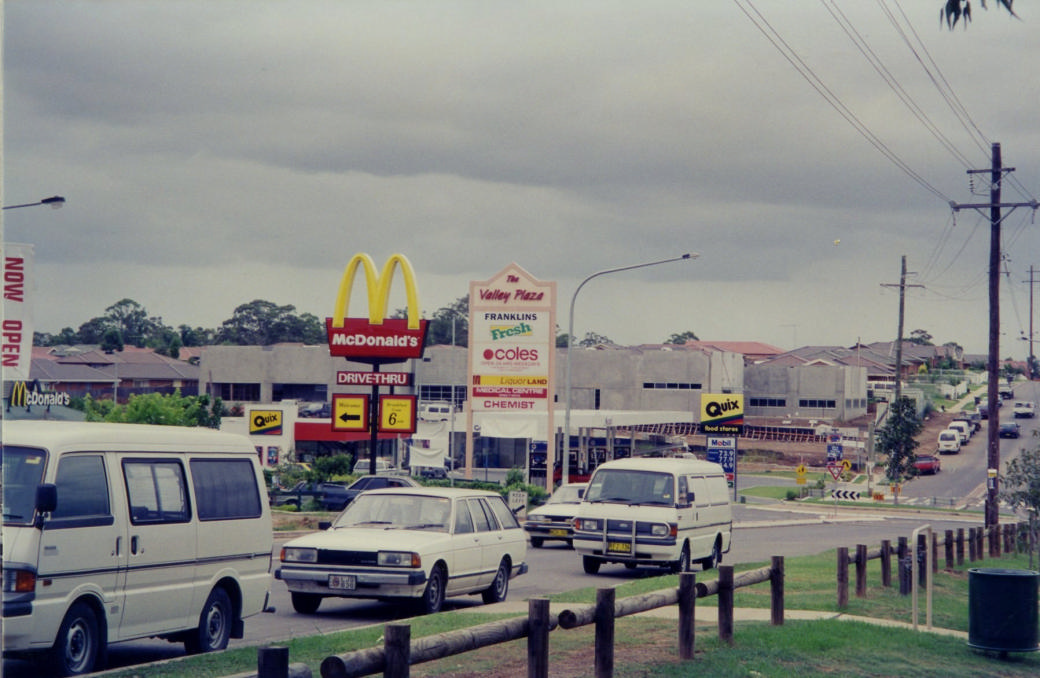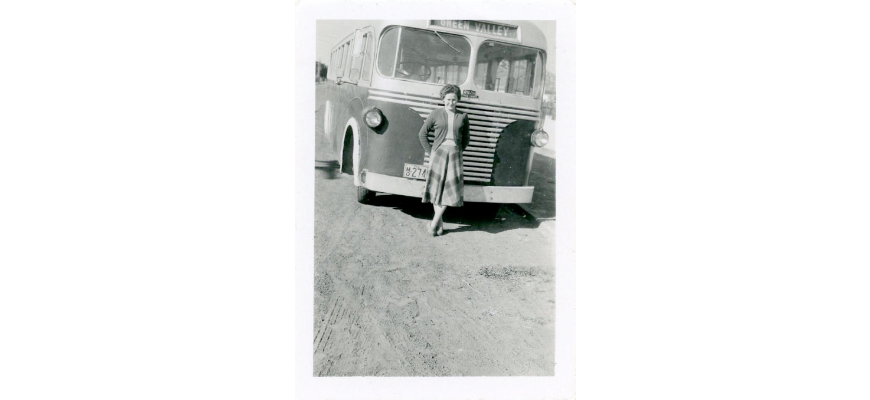Green Valley was officially gazetted as a suburb on the 7th of April 1972, however the area was known as Green Valley long before this. A large area to the northwest of Liverpool, Green Valley originally encompassed the present-day suburb, as well as what is now known as Ashcroft, Busby, Cartwright, Heckenberg, Miller, Sadleir and parts of Hinchinbrook and Mount Pritchard.
Colonial Land Grants
The land in the present suburb of Green Valley was originally made up of grants to Peter Miller (for whom Miller is named), C.A. Scrivener, James Bull and Bridget Peters. C.A. Scrivener was a shopkeeper, an auctioneer and a Justice of the Peace. He was an Alderman for Liverpool Council and served as Mayor seven times between 1874-1894. He signed the application form for the first school to be built in Green Valley in 1882. Finance was not available for the planned brick schoolhouse with teachers’ residence, so the first school was a canvas building with a timber framework and floor. It opened for classes in August 1882.
The Orphan Schools
The area was a small part of almost 5000 hectares designated by Governor King in 1803 to support orphans at the Female Orphan School. A wooden administration building was built in 1806, now located in the suburb of Bonnyrigg. In 1818, the Female Orphan School moved to Rydalmere and in 1823 the property became the Male Orphan School. In the late 1860s, the Orphan School land began to be subdivided, becoming a rural area with land grants of various sizes.
Estate of Tomorrow or The Valley of Despair?
Green Valley as it is recognised today was created between 1961-1965. It was one of six suburbs that formed the Green Valley Housing Estate created by the Housing Commission of New South Wales during the affordable housing crisis of the 1960s. The first sod for the official opening of the Green Valley Garden Suburb Housing Project was turned on 3 August 1961 by the Minister for Housing, Abe Landa.

Turning the first sod at Green Valley Housing Commission 3 August 1961
The Green Valley District was originally named for the green pastures which supported a dairy industry. Up until the new Green Valley Housing Estate was established in part of the suburb in the 1960s the Green Valley area was predominantly market gardens and chicken farms.
“The most ambitious new suburban development ever undertaken in New South Wales is now well under-way in Green Valley, close to Liverpool. On what was once virgin rural land, the Housing Commission is developing a £20 million suburb which will include 6,400 cottages, flats, and aged persons units for an estimated population of about 25,000 people.” - New South Wales Housing Commission, 1964
The majority of the Commission’s new dwellings were detached houses built according to sanitary town planning principles. It was claimed that the housing commission would create “a potential labour force in strategic areas which attracted and allowed “breathing space” for industrial expansion – and provided the “castle” for the working man and his family”.
Many residents of the original Green Valley were not pleased by this development. In their public history, On the Bridge (1989), Donna Abela and Janet Tavener explain that “The newsworthy and negative factors, such as underprivileged, working class, deserted wives, louts and unemployed, were added together, and the results of this Green Valley equation were the alter egos of ‘Doge City’ and ‘Valley of Despair’.” A population exclusively of young parents and small children amplified social inequity, and the community was severely under-resourced due to its geographic isolation. There were few jobs, poor access to healthcare, only two in five residents had a car and only one in ten could afford a telephone.
“Pram city was a favourite form of reference coined by the media....Everyone had a pram containing baby plus toddler, or baby and groceries. It wasn’t unusual to see an additional one or two hanging of the handle. Bus drivers in particular hated assisting all of us on and off the bus. The women in the end would help each other or manage to do it themselves.” - Rosemary, Green Valley Resident
The project saw the population of Liverpool rise from 30,883 in 1961 to 82,447 in 1971.xiii
Liverpool Speedway
Liverpool Speedway (also known during its life as Liverpool International Speedway and Liverpool City Raceway) was located in Green Valley. Liverpool Speedway was officially opened by the Oliveri Family on 14 May 1967. The 440-metre (480 yd) track was D-shaped and originally had a clay-and-dolomite mix that was changed to asphalt in 1974.
Liverpool Speedway's biggest annual event was the Marlboro Grand National 100 Lap race which was first run in 1971 and won by local driver Rick Hunter.
Changing Borders
The district known as Green Valley was a much larger area than it is now. The housing estates that cover Ashcroft, Busby, Cartwright, Heckenberg, Miller and Sadleir were all originally part of Green Valley. In 1986 the boundaries of the suburb were changed again to form the suburb of Hinchinbrook. There were plans to enlarge Hinchinbrook in 1993, but opposition from Green Valley residents meant it did not proceed.

Wilson Road looking south, Green Valley, 1997
Green Valley Library
The Green Valley Library was opened on 5 July 1997 as part of the Green Valley Community Centre. It was officially opened by Mayor George Paciullo, and Council General Manager Brian Carr. It is located at 179 - 183 Wilson Road, Green Valley.
Notable residents
Mark Latham
Born on 28 February 1961, Mark Latham grew up in Green Valley near Liverpool in Western Sydney and went to school at Ashcroft Primary School and Hurlstone Agricultural High School, where he was Dux in 1978.
Following his graduation from university in 1982, Mark has worked for a series of Labor politicians, including John Kerin, Gough Whitlam and Bob Carr. He served as Mayor of Liverpool Council between 1991 and 1994, having been elected to Liverpool Council as an East Ward Alderman in 1987.
In national politics, Mark was the Member for Werriwa (1994-2005), a Labor Shadow Minister (1996-98 and 2001-2003) and Leader of the Opposition (2003-2005). He lost against John Howard at the October 2004 Federal election. In November 2018 Latham announced his candidacy for the NSW Legislative Council as the State Leader of Pauline Hanson’s One Nation party.
Frank Oliveri
Frank Oliveri is a well-known Green Valley resident.
Oliveri migrated to Australia from Calabria, Italy on 19 May 1949 at the age of 18. He moved to Green Valley in the 1950s and established a bus company, taking advantage of the population boom and growing suburbanisation. The white, green and red buses of Oliveri’s Metro-link became an intrinsic part of the Green Valley landscape.
In 1965, Frank stood for election to Liverpool City Council. He had a thirty-four year career in Liverpool City Council. Oliveri also created the Liverpool Speedway which became a community hub for motor enthusiasts and local families.
Liverpool Regional Museum held an exhibition titled “Frank Oliveri: an independent man" in 2004.

Lena Oliveri standing in front of an Oliveri Bus, 1957
Abela, Donna and Tavener, Janet. On The Bridge: Liverpool Social History (Liverpool: Janet Tavener, Donna Abela and Liverpool Skillshare), 1989.
Australian Bureau of Statistics. 1961 Census - Bulletin No 2 - Population and Dwellings in Local Government Areas (Canberra: Commonwealth Bureau Of Census And Statistics, 1961) Access: https://www.ausstats.abs.gov.au/ausstats/free.nsf/0/790FE8EEA9A8D6D8CA2578EA001E7F21/$File/1961%20Census%20-%20Bulletin%20No%202.pdf
Australian Bureau of Statistics. 1971 Bulletin 6. Population And Dwellings In Local Government Areas And Urban Centres (Canberra: Commonwealth Bureau Of Census And Statistics, 1971) Access: https://www.ausstats.abs.gov.au/ausstats/free.nsf/0/C62D3918BCA99584CA257884001849EA/$File/1971%20Census%20-%20Bulletin%20No%206%20-%20Population%20and%20Dwellings%20in%20LGA%20-%20Part%201%20NSW.pdf
Hair, Jonathan. Green Valley's social housing experiment still being fixed 60 years later. https://www.abc.net.au/news/2021-04-04/green-valley-social-housing-experiment-failure-60-years-later/100043388
Whatever Happened to Green Valley? Film directed by Peter Weir, 1973.
Burchell, David. ‘Trying to Find the sunny side of life’, Griffith Review, 2008. Accessed 25/02/2022. Source: https://griffithreview.com/articles/trying-to-find-the-sunny-side-of-life/
Compiled by Liverpool City Library. Suburbs and Localities: Green Valley [Local Studies Pamphlet]. Catalogue: https://liverpool.spydus.com/cgi-bin/spydus.exe/ENQ/WPAC/BIBENQ?SETLVL=&BRN=74537
Sweeney, Therese. Photographic study of Green Valley. Available in the catalogue here: https://liverpool.spydus.com/cgi-bin/spydus.exe/ENQ/WPAC/BIBENQ?SETLVL=&BRN=101676
See something missing?
You know your suburb better than anyone. If you think an important part of your suburb’s history is missing, whether recent or distant, reach out to the Local Studies Team through our online Local and Family History enquiry form. We are always looking for new ways to bring the vibrant history of Liverpool to life!
